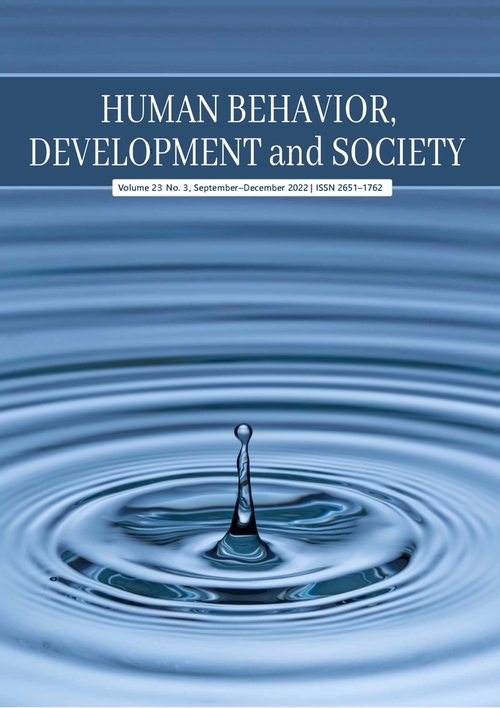Visual and Verbal Content Analysis of COVID-19 News Reports on Facebook
Main Article Content
Abstract
The biggest global news story of 2020–2021 was the COVID-19 pandemic. Although the virus was a scientific and medical issue, societal responses to the virus with regards to vaccine and mask mandates became highly debated political issues in the United States. Different news agencies in the US tend to have audiences that are politically biased; however, it is unknown how the multimodal content of COVID-19 news stories posted to social media might align with the audiences’ political beliefs. A visual and textual content analysis was employed to investigate COVID-19 news stories that FOX (with a conservative audience), CNN (with a mixed audience), and NPR (with a liberal audience) posted to Facebook. The results showed differences among the news media in both the visual and textual modes that appear to corroborate with their audiences’ biases. COVID-19 news from FOX was focused on the authority of Republican government officials, while NPR was often concerned with the effects that the virus has on daily life. CNN, meanwhile, took a more moderate, scientific approach. This study provides insights into how people from different political beliefs are exposed to different news content even if the main topic of the story is similar.
Article Details

This work is licensed under a Creative Commons Attribution-NonCommercial-NoDerivatives 4.0 International License.
Copyright: Asia-Pacific International University reserve exclusive rights to publish, reproduce and distribute the manuscript and all contents therein.
References
Abbas, A.H. (2022). Politicizing the pandemic: A schemata analysis of COVID‐19 news in two selected newspapers. International Journal of Semiotic Law, 35, 883–902. https://doi.org/10.1007/s11196-020-09745-2.
Anfinrud, P., Bax, C. E., Stadnytskyi, V., & Bax, A. (2020). Could SARS-CoV-2 be transmitted via speech droplets? medRxiv [Preprint]. https://doi.org/10.1101/2020.04.02.20051177
Barone, E. (2020, October 26). U.S. COVID-19 cases are skyrocketing, but deaths are flat—So far. These 5 charts explain why. Time. https://time.com/5903590/coronavirus-covid-19-third-wave/
Behring, S. (2021, August 31). How long do the COVID-19 vaccines protect you? Healthline. https://www.healthline.com/health/how-long-does-covid-vaccine-protect-you
Bell, P. (2001). Content analysis of visual images. In T. Van Leeuwen & C. Jewitt, (Eds.), Handbook of visual analysis (pp. 10–34). Sage. https://doi.org/10.4135/9780857020062.n2
Benkler, Y., Faris, R., & Roberts, H. (2018). Network propaganda: Manipulation, disinformation, and radicalization in American politics. Oxford University Press.
Bosman, J., Hoffman, J., Sanger-Katz, M., & Arango, T. (2021, October 24). Who are the unvaccinated in America? There’s no one answer. The New York Times. https://www.nytimes.com/2021/07/31/us/virus-unvaccinated-americans.html
Bump, P. (2021, August 25). The undeniable overlap of politics, vaccinations and the impact of the virus’s fourth wave. The Washington Post. https://www.washingtonpost.com/politics/2021/08/25/virus-overlap-politics-vaccination/
Catalán-Matamoros, D., & Peñafiel-Saiz, C. (2019). Media and mistrust of vaccines: A content analysis of press headlines. Revista Latina de Comunicación Social, 74, 786–802.
Croteau, D. (1999). Examining the “Liberal media” claim: Journalists’ views on politics, economic and social policy (Including Health Care), and media coverage. International Journal of Health Services, 29(3), 627–655. https://doi.org/10.2190/31tn-1u82-67ud-cxbf
Fowlkes, A., Gaglani, M., Groover, K., Thiese, M. S., Tyner, H., & Ellingson, K. (2021). Effectiveness of COVID-19 vaccines in preventing SARS-CoV-2 infection among frontline workers before and during B.1.617.2 (Delta) variant predominance—Eight U.S. locations, December 2020–August 2021. Morbidity and Mortality Weekly Report, 70(34), 1167–1169. https://doi.org/10.15585/mmwr.mm7034e4
Gandasari, D., & Dwidienawati, D. (2020). Content analysis of social and economic issues in Indonesia during the COVID-19 pandemic. Heliyon, 6(11), e05599.
Grieco, E. (2020, April 1). Americans’ main sources for political news vary by party and age. Pew Research Center. https://www.pewresearch.org/fact-tank/2020/04/01/americans-main-sources-for-political-news-vary-by-party-and-age
Groeling, T. (2008). Who's the fairest of them all? An empirical test for partisan bias on ABC, CBS, NBC, and Fox News. Presidential Studies Quarterly, 38(4), 631-657.
Groseclose, T., & Milyo, J. (2005). A measure of media bias. The Quarterly Journal of Economics, 120(4), 1191–1237. https://doi.org/10.1162/003355305775097542
Hall, R. (2020, March 25). Anti-vaccination movement could derail fight against coronavirus, experts warn. The Independent. https://www.independent.co.uk/news/world/americas/ coronavirus-vaccine-anti-vaxxer-donald-trump-a9426151.html
Jackson, C., Newwall, M., Diamond, J., Duran, J., Rollason, C. (2022, September 13). Americans moving on from COVID-19 despite acknowledged risks. Ipsos. https://www.ipsos.com/en-us/news-polls/axios-ipsos-coronavirus-index
Lemire, J., Miller, Z., Colvin, J., & Alonso-Zaldivar, R. (2020, April 13). Signs missed and steps slowed in Trump’s pandemic response. AP NEWS. https://apnews.com/article/virus-outbreak-donald-trump-us-news-ap-top-news-politics-6a8f85aad99607f313cca6ab1398e04d
Lizza, R., & Lippman, D. (2020, May 1). Wearing a mask is for smug liberals. Refusing to is for reckless Republicans. POLITICO. https://www.politico.com/news/2020/05/01/masks-politics-coronavirus-227765
Martikainen, J., & Sakki, I. (2021). Boosting nationalism through COVID-19 images: Multimodal construction of the failure of the ‘dear enemy’ with COVID-19 in the national press. Discourse & Communication, 15(4), 388–414. https://doi.org/10.1177/17504813211002039
Robertson, N. (2020, July 18). Trump does not think US needs a national mask mandate. CNN Politics. https://edition.cnn.com/2020/07/18/politics/trump-us-mask-mandate-coronavirus/index.html
Schumaker, E. (2021, May 8). Vaccination rates lag in communities of color, but it’s not only due to hesitancy, experts say. ABC News. https://abcnews.go.com/Health/vaccination-rates-lag-communities-color-due-hesitancy-experts/story?id=77272753
World Health Organization. (2020, January 30). Statement on the second meeting of the International Health Regulations. (2005) Emergency Committee regarding the outbreak of novel coronavirus (2019-nCoV). World Health Organization. https://www.who.int/news/item/30-01-2020-statement-on-the-second-meeting-of-the-international-health-regulations-(2005)-emergency-committee-regarding-the-outbreak-of-novel-coronavirus-(2019-ncov)
Xu, M., Luo, Z., Xu, H., & Wang, B. (2022). Media bias and factors affecting the impartiality of news agencies during COVID-19. Behavioral Sciences, 12(9), 313. https://doi.org/ 10.3390/bs12090313
Zuckerman, E. (2019). Building a more honest internet. Columbia Journalism Review. https://www.cjr.org/special_report/building-honest-internet-public-interest.php


